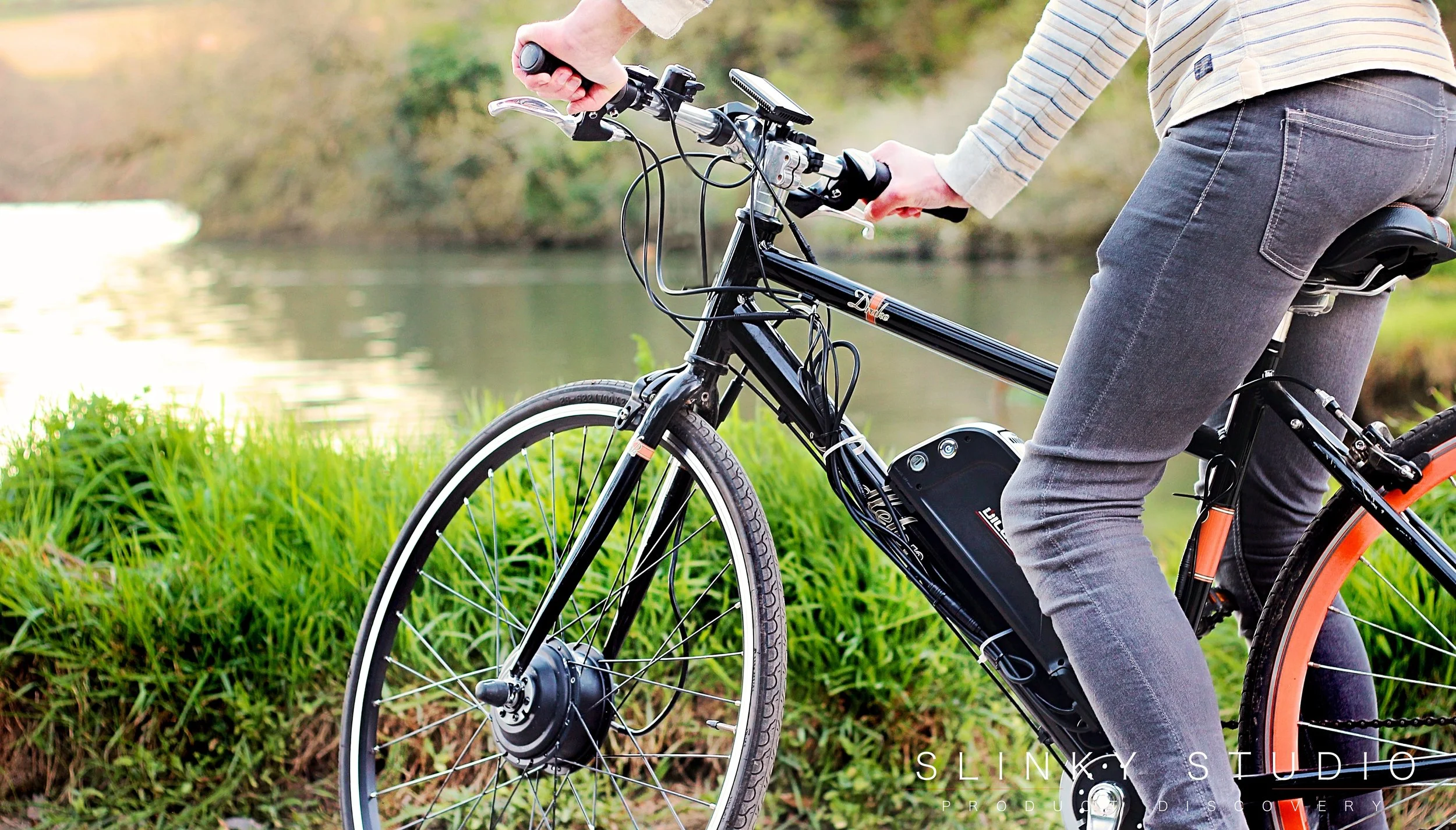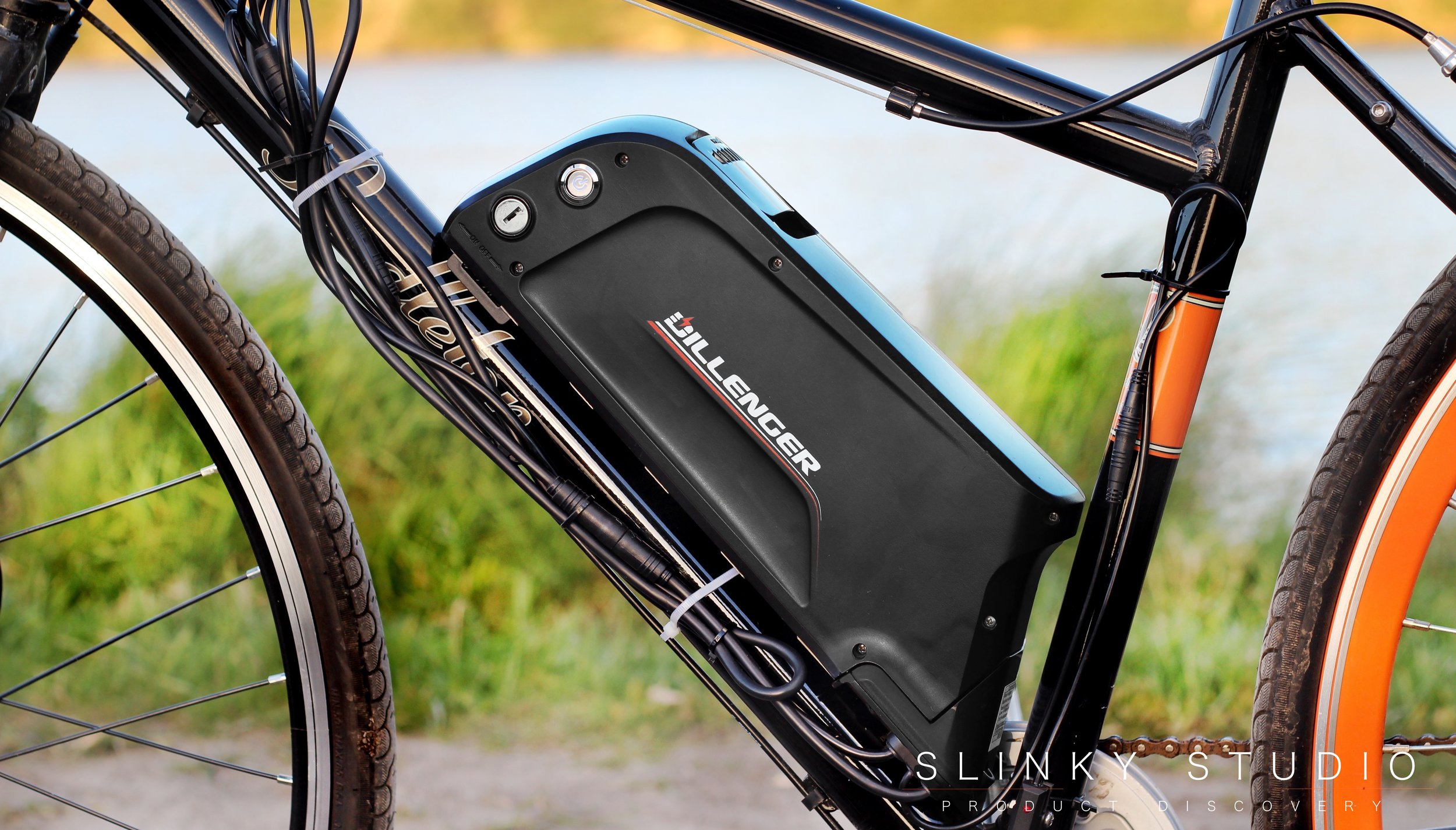Dillenger Street Legal eBike Conversion Kit Review
Fancy some electrified assistance but you’re perfectly happy with your current two wheeled companion? Then perhaps a Dillenger street legal eBike conversion kit (£899 UK - $999 USA) could be for you, awarding your present bike with all the benefits of electric cycling. We’ve installed it, used it and can divulge everything you need to know.
What’s in the box?
In truth many smaller boxes… Upon peaking into these on arrival we did get a jolt of apprehension regarding the difficulty level of the project due to the various components and many cables. However, once everything was laid out and we understood what we were doing in the set-up, the enigma of the complexity vanished. You get a surprisingly light front wheel with the motor hub pre-installed, Samsung battery, LCD screen, controls, throttle, pedal assist sensor, brake sensors and a lot of cables.
Set-up
We panned through our bike collection and picked out the Pendleton Drake bike to be electrically converted. Reasons being: it’s black so will match the kit, and its lightweight aluminium build comes in at 13.6kg, which means that when the weight of the 7.7kg (4.5kg battery removed) kit is added, the total finished weight is a reasonable 21.3kg. Next we educated ourselves with both the helpful but slightly outdated Dillenger YouTube tutorial and up to date instructional online written guide, to attain a full overview of what we had to do. We’ve included a photo slideshow below of our steps for a detailed reference. Thankfully the bike's frame and general conversion threw no real complications with the kit's intended installation. In fact, our biggest hurdle was met when we started: This bike has a quick release front wheel, but whilst it was off in seconds, getting the tyre removed to mount onto the new Dillenger was more of a difficulty than expected. Eventually we managed to get some leverage and reinstalling the tyre and inner tube took only a speedy minute.
A second issue was that one of the front fork dropouts was far tighter than the other, so out came the trusty Ryobi ONE+ Brushless drill to create a larger opening by scraping away some aluminium surface area. Once we got the opening wider, the wheel popped on snugly and the rest of the installation was downhill from this point. The battery dock in the middle of the frame went on swiftly, so too did the pedal sensor and the ingeniously simple brake sensors that make our existing brake levers cut out the motor when applied. Connecting the display and controller by clipping them over the front handle was straightforward, but the throttle, which admittedly could be left off, seems like the only part of the kit that is slightly flawed. Unfortunately it doesn't, as the screen and controller do, clip over the handle bar, but instead requires a handle grip to be removed for it to slide on. With our bike this just wasn’t an option because of the unique handle grip material, so we’ve fastened it on via a separate means that works really well for us. Once everything was in place we connected up the colour coded wires, used the cable ties to tidy everything, and we were finished - our bike was now electric!
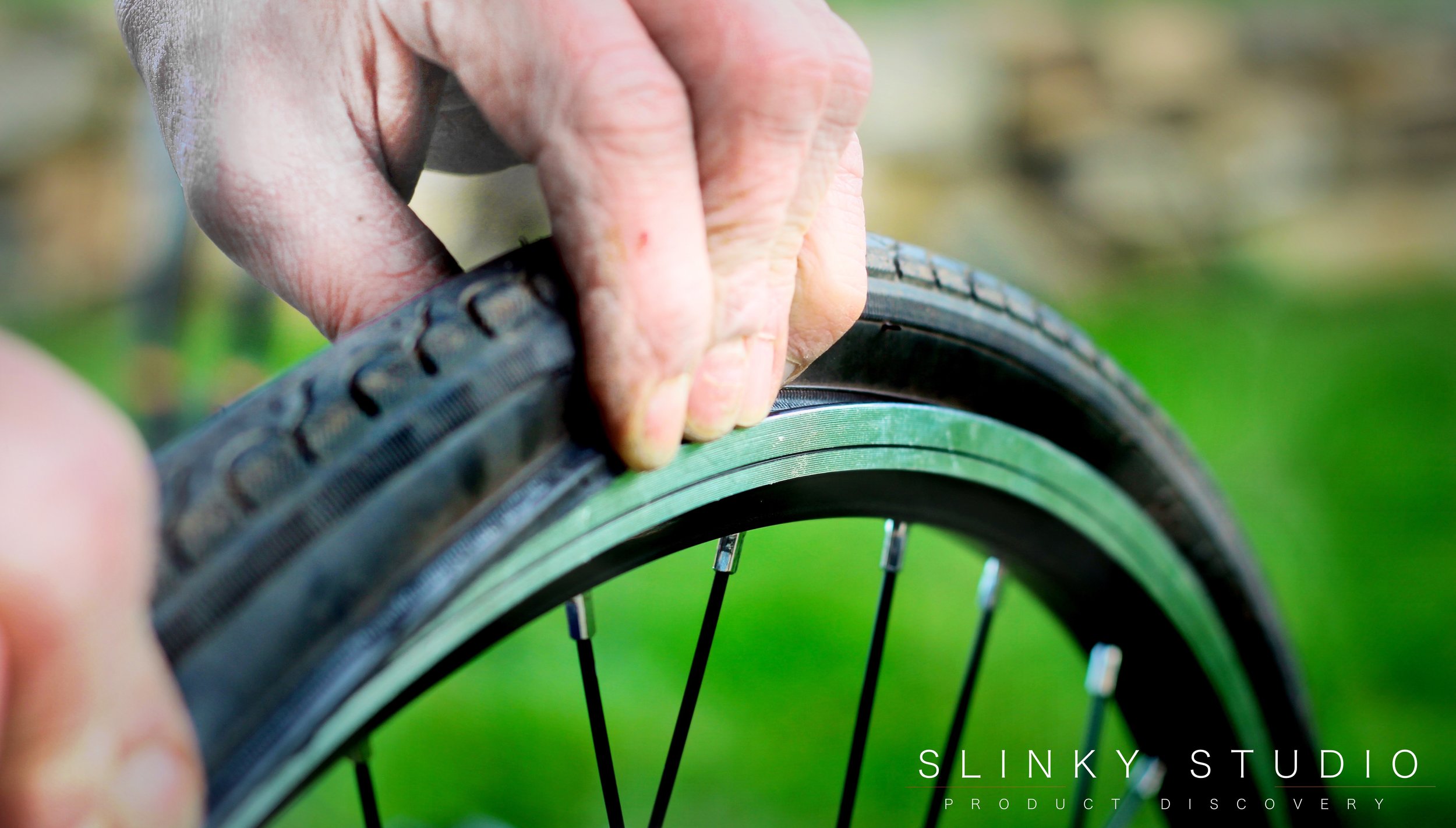

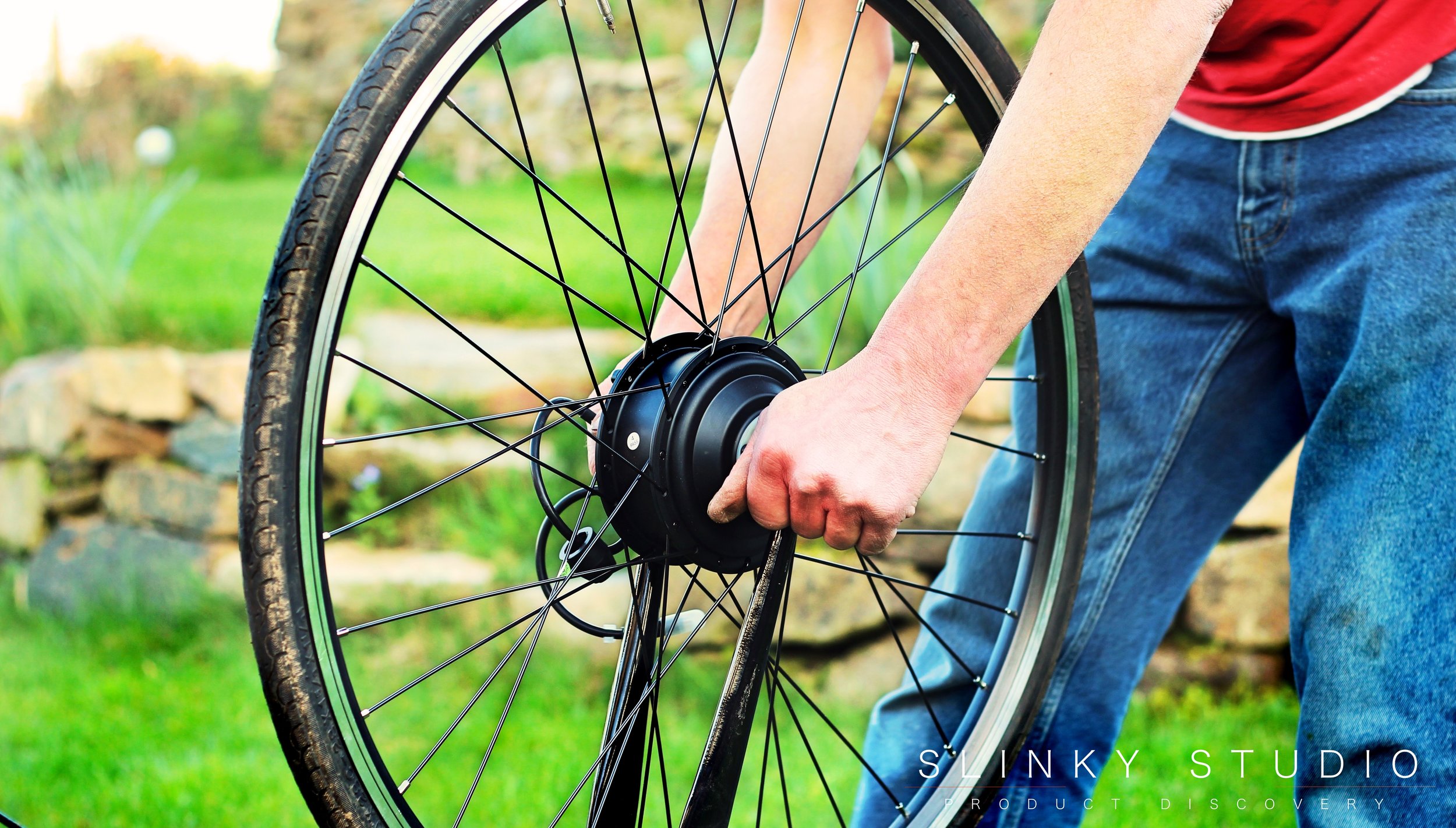
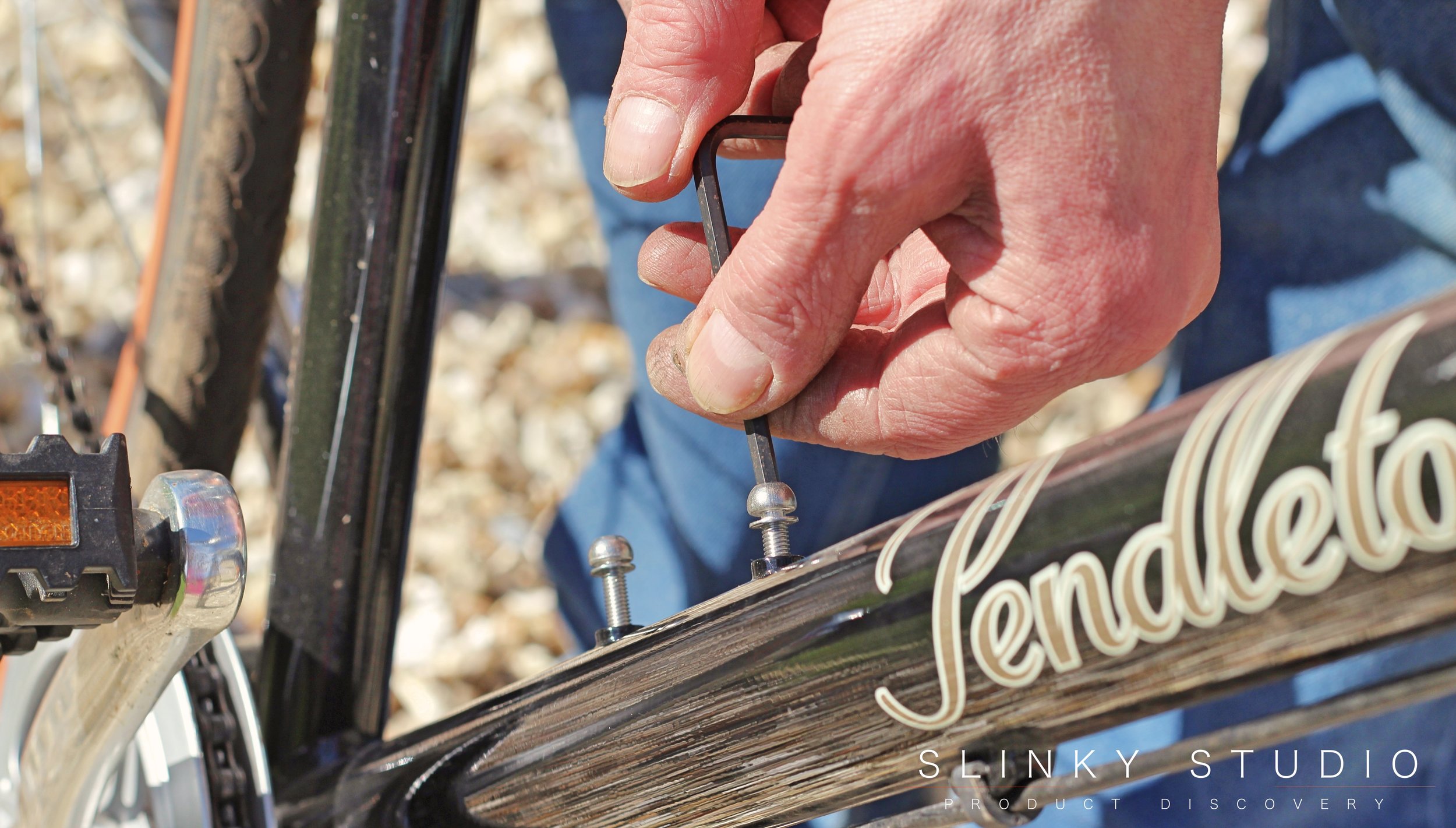
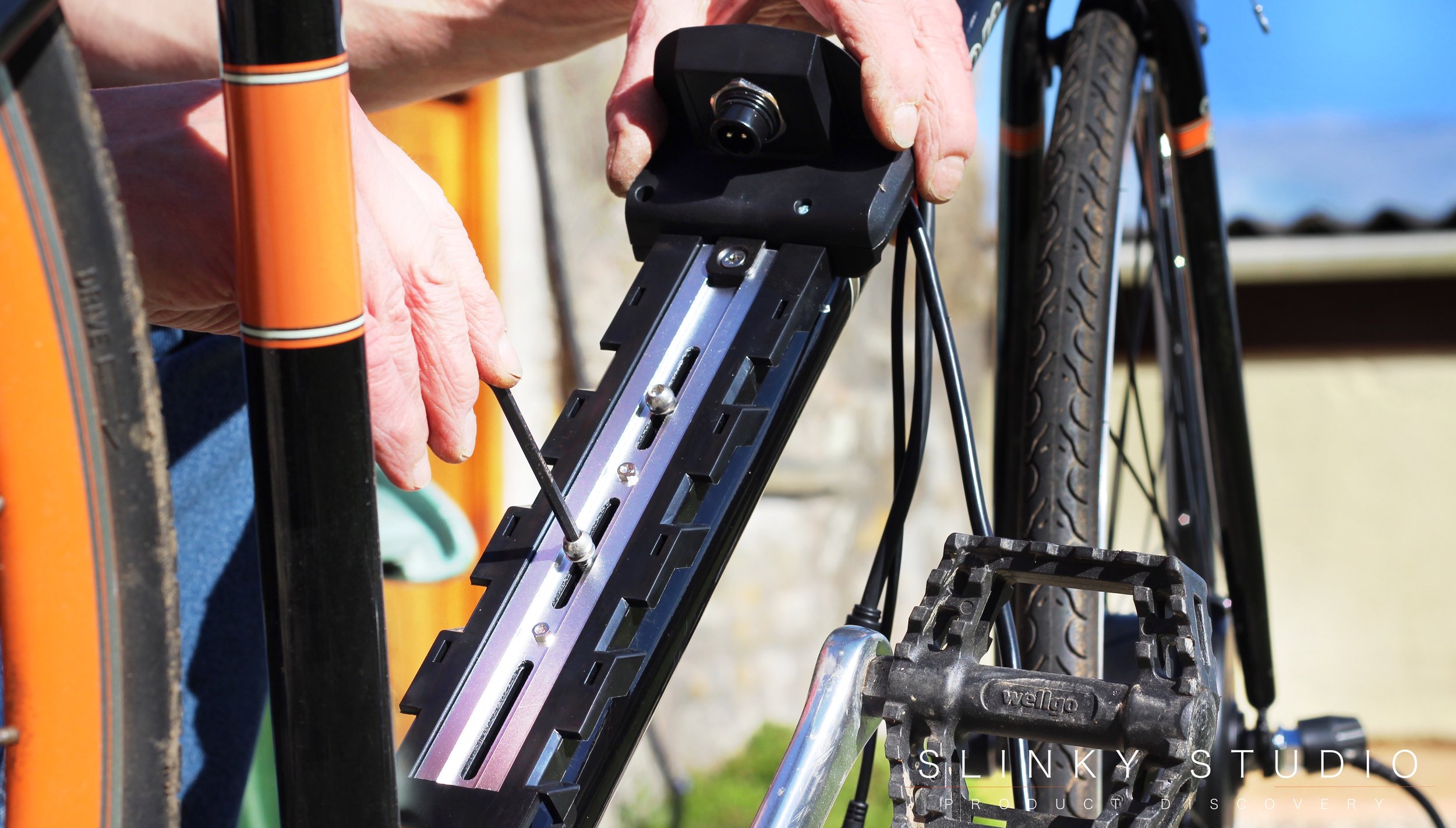
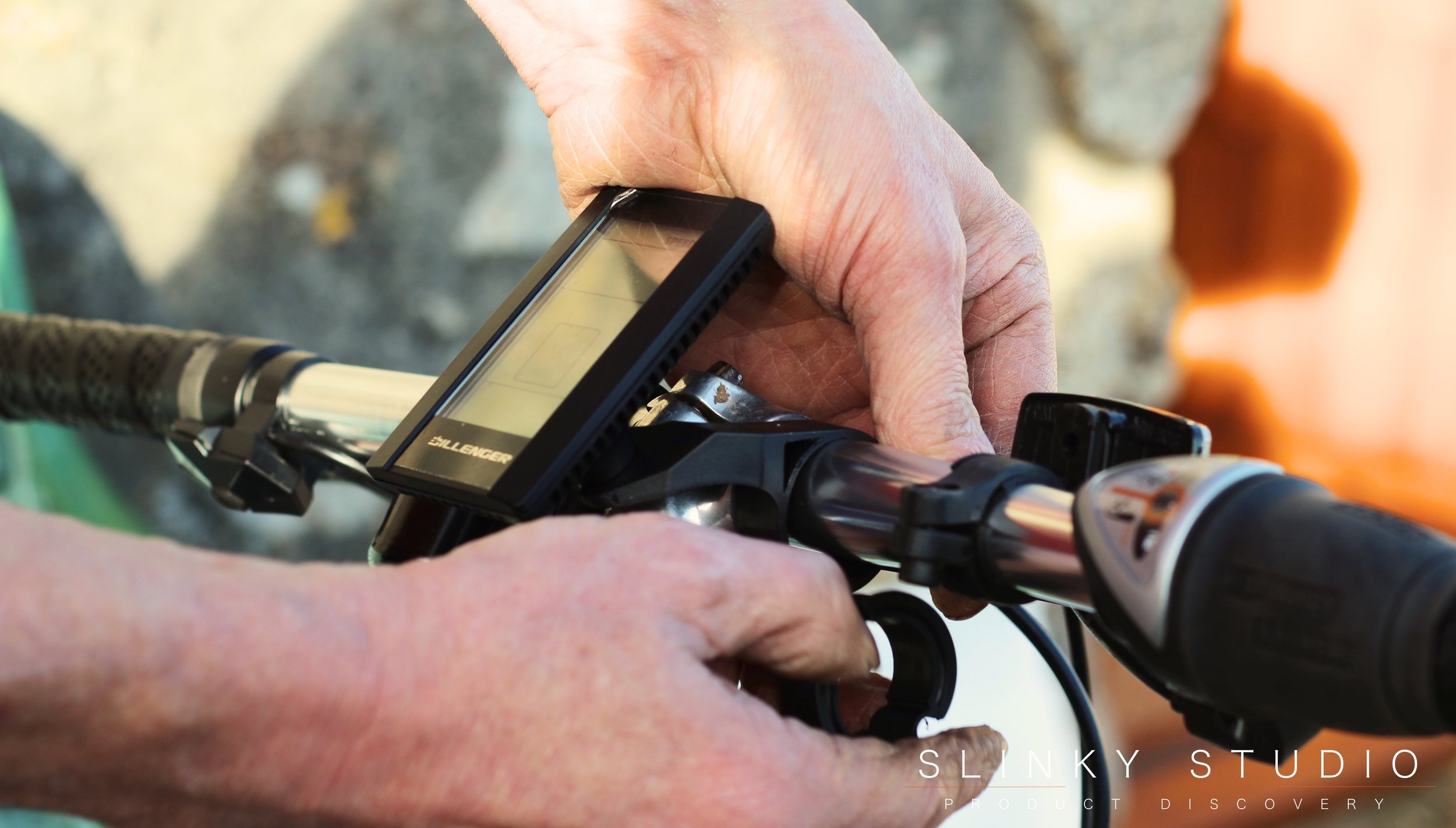
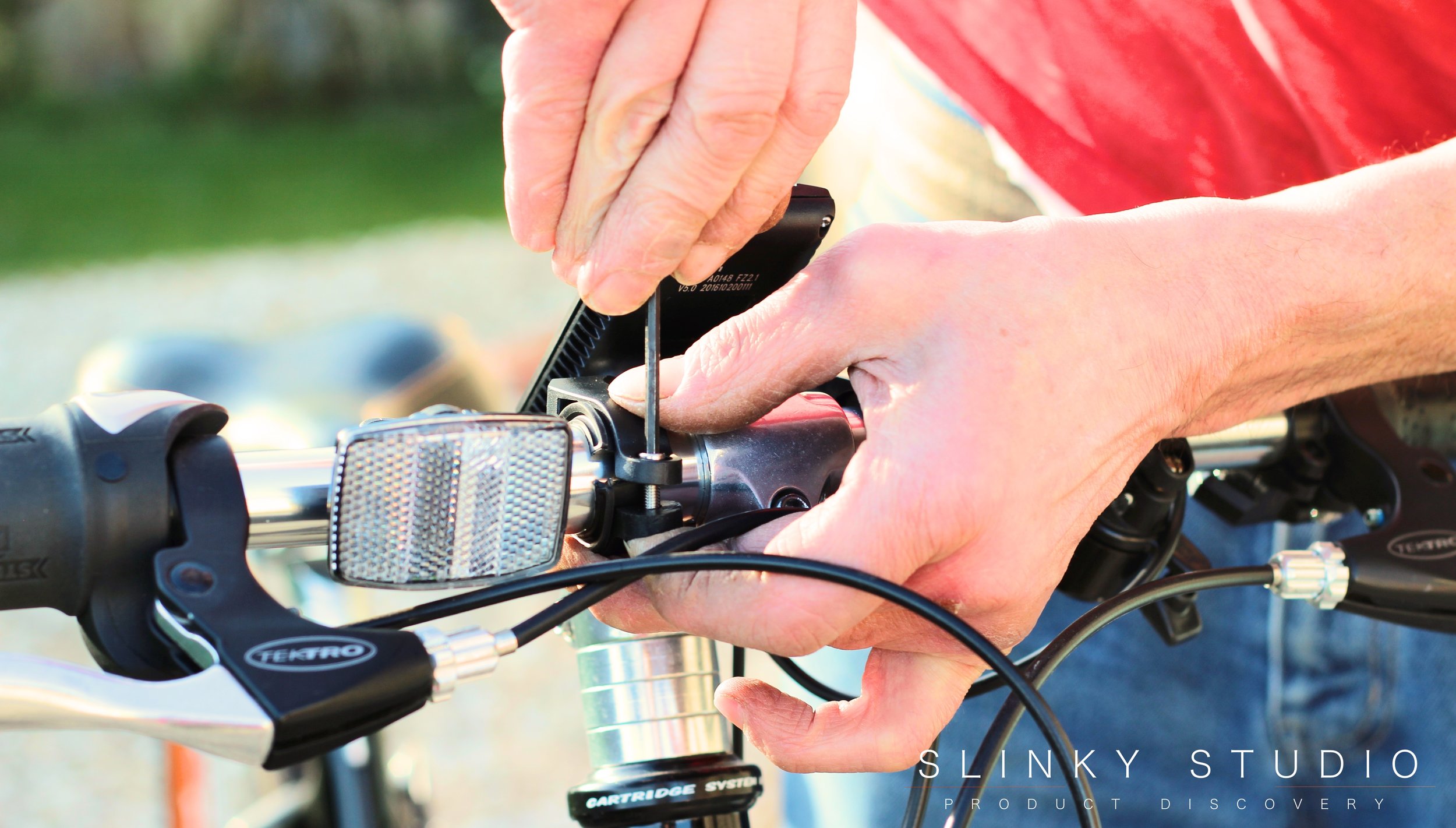
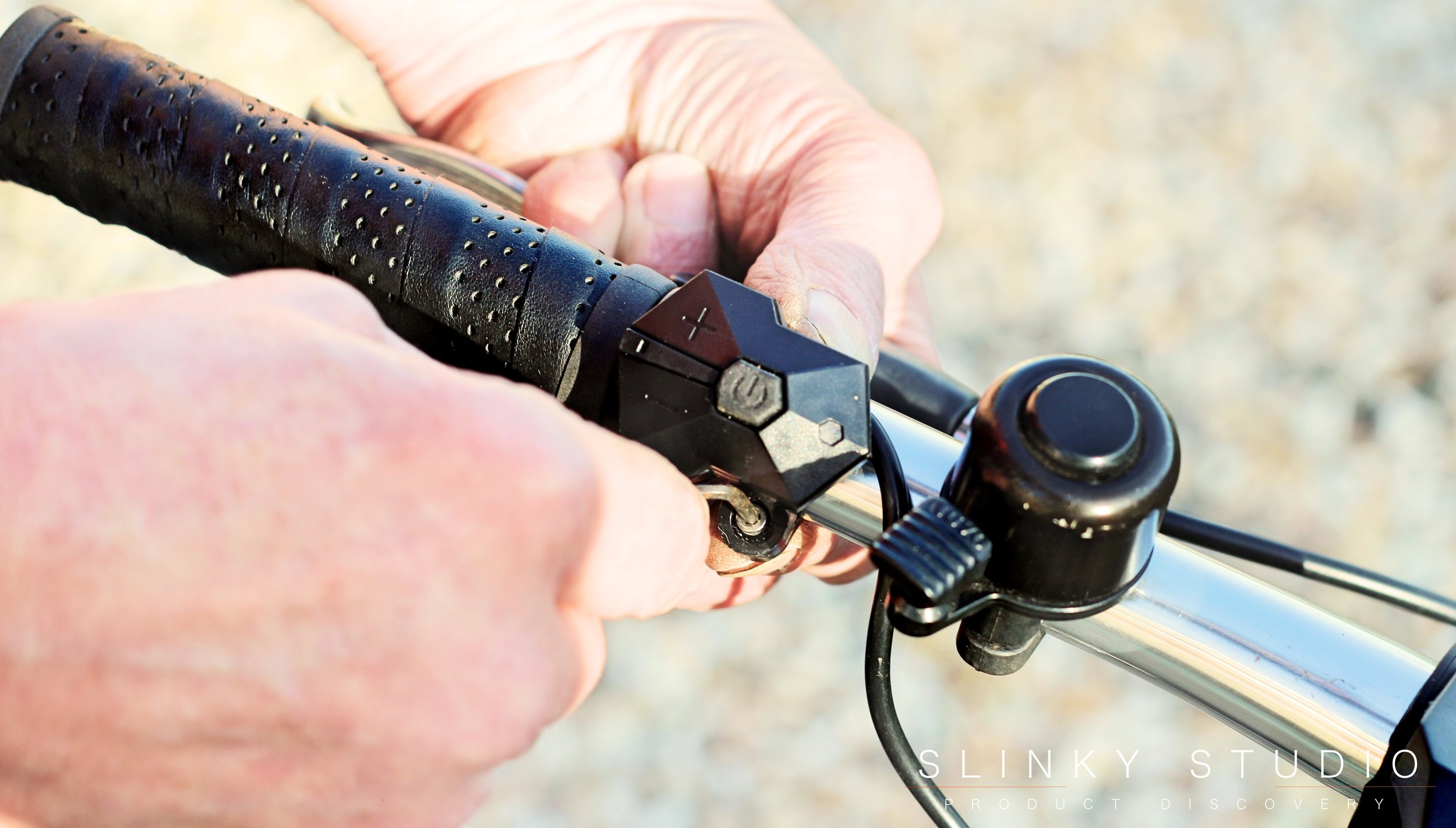
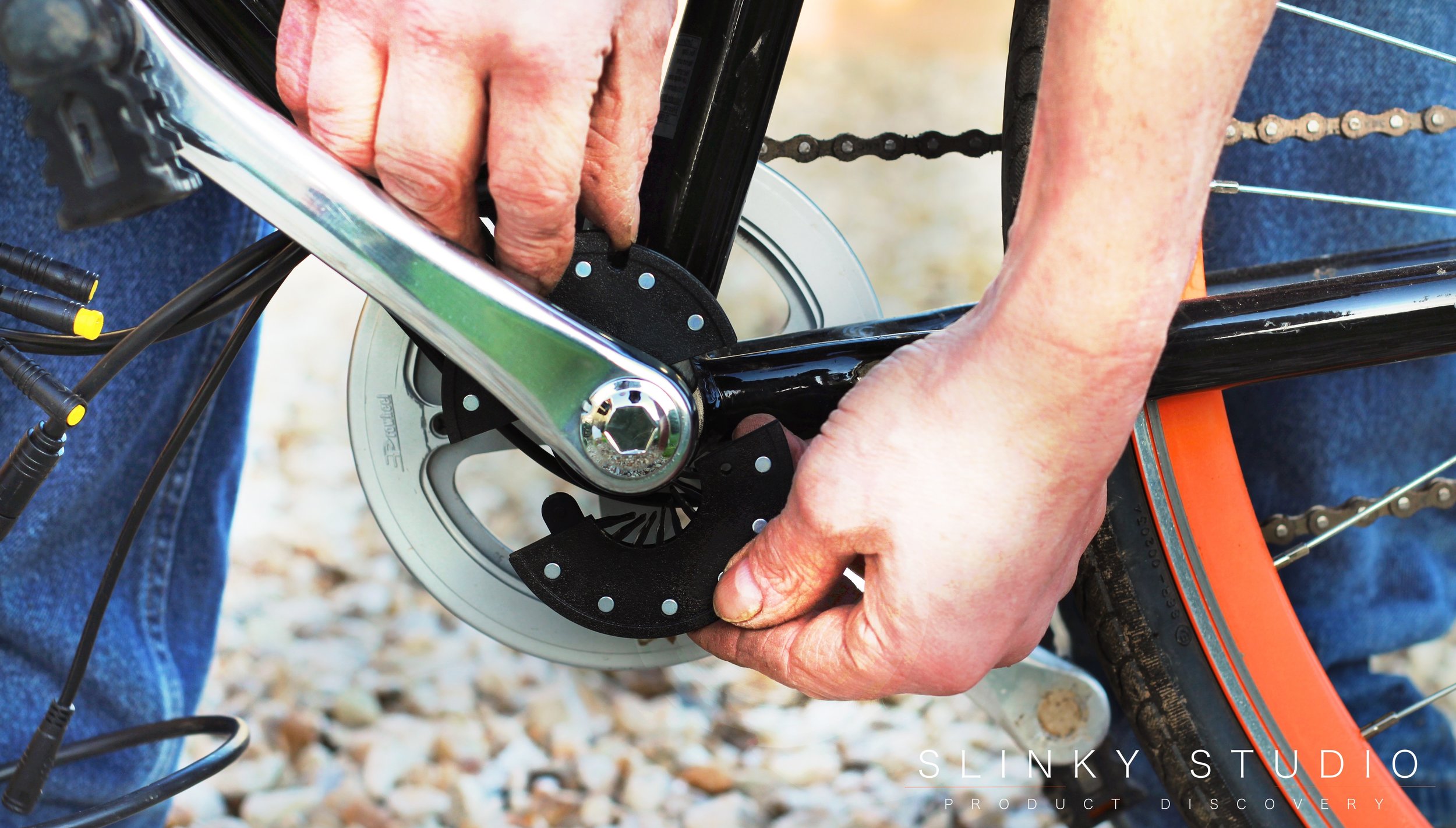
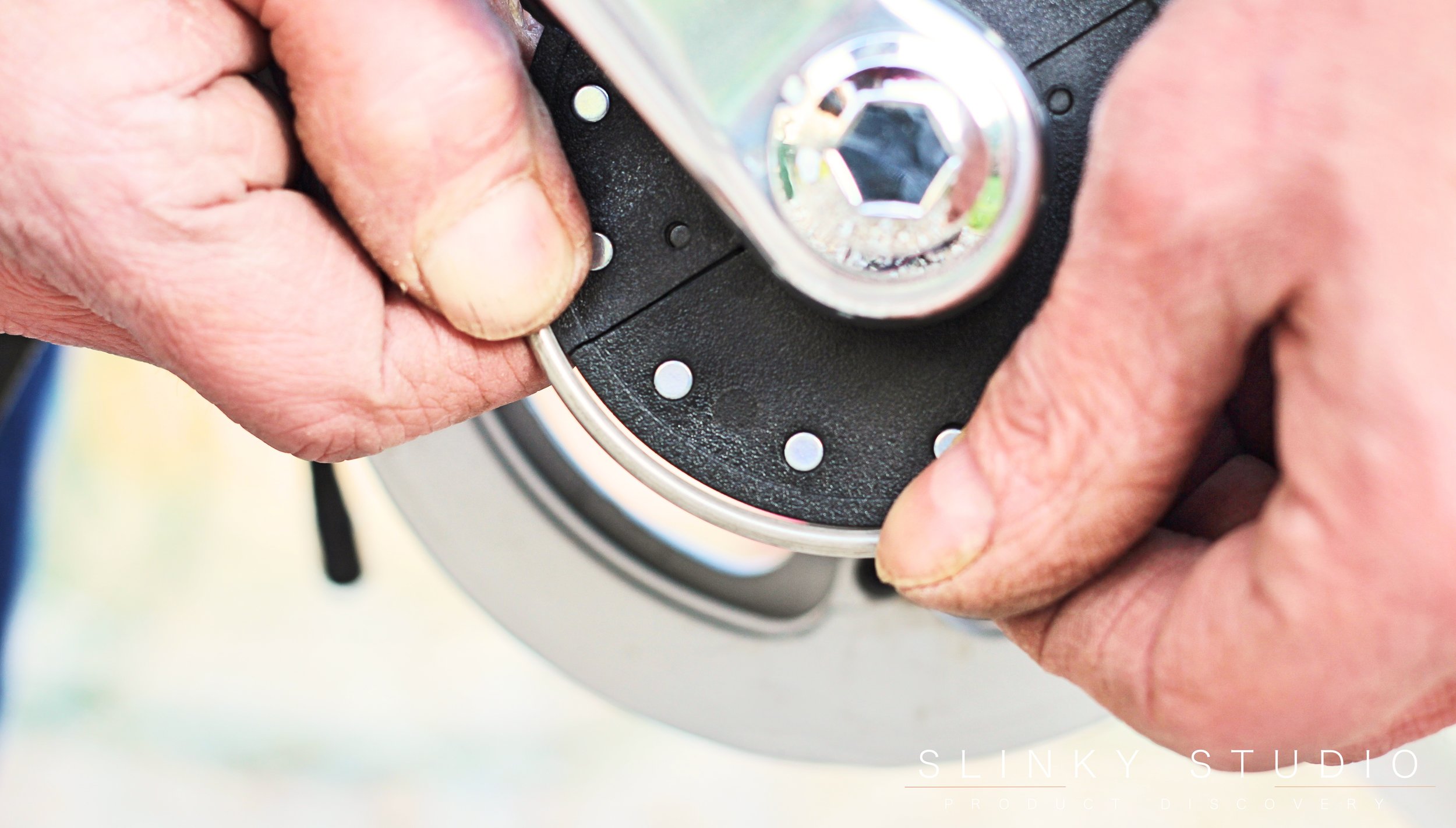
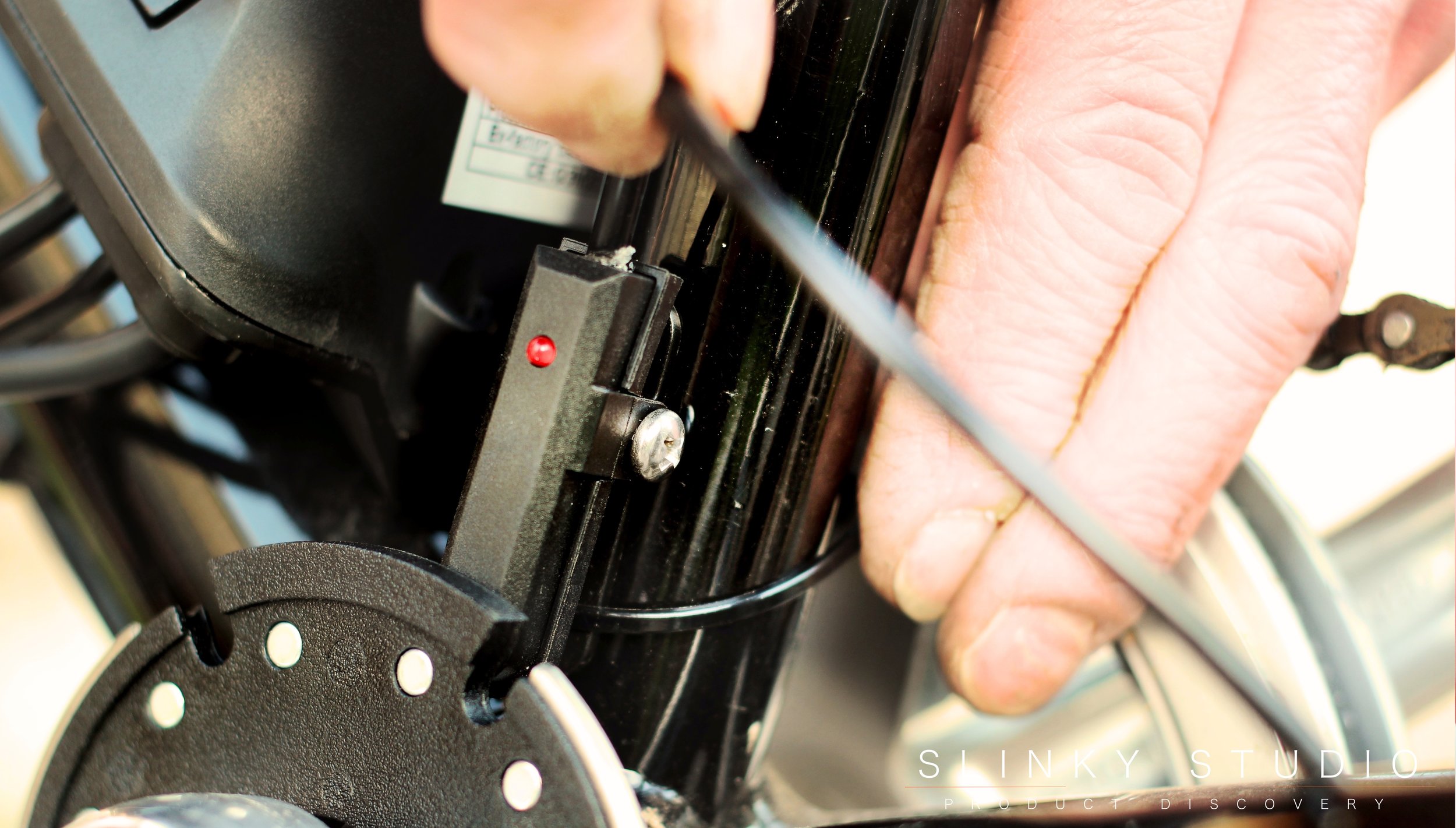
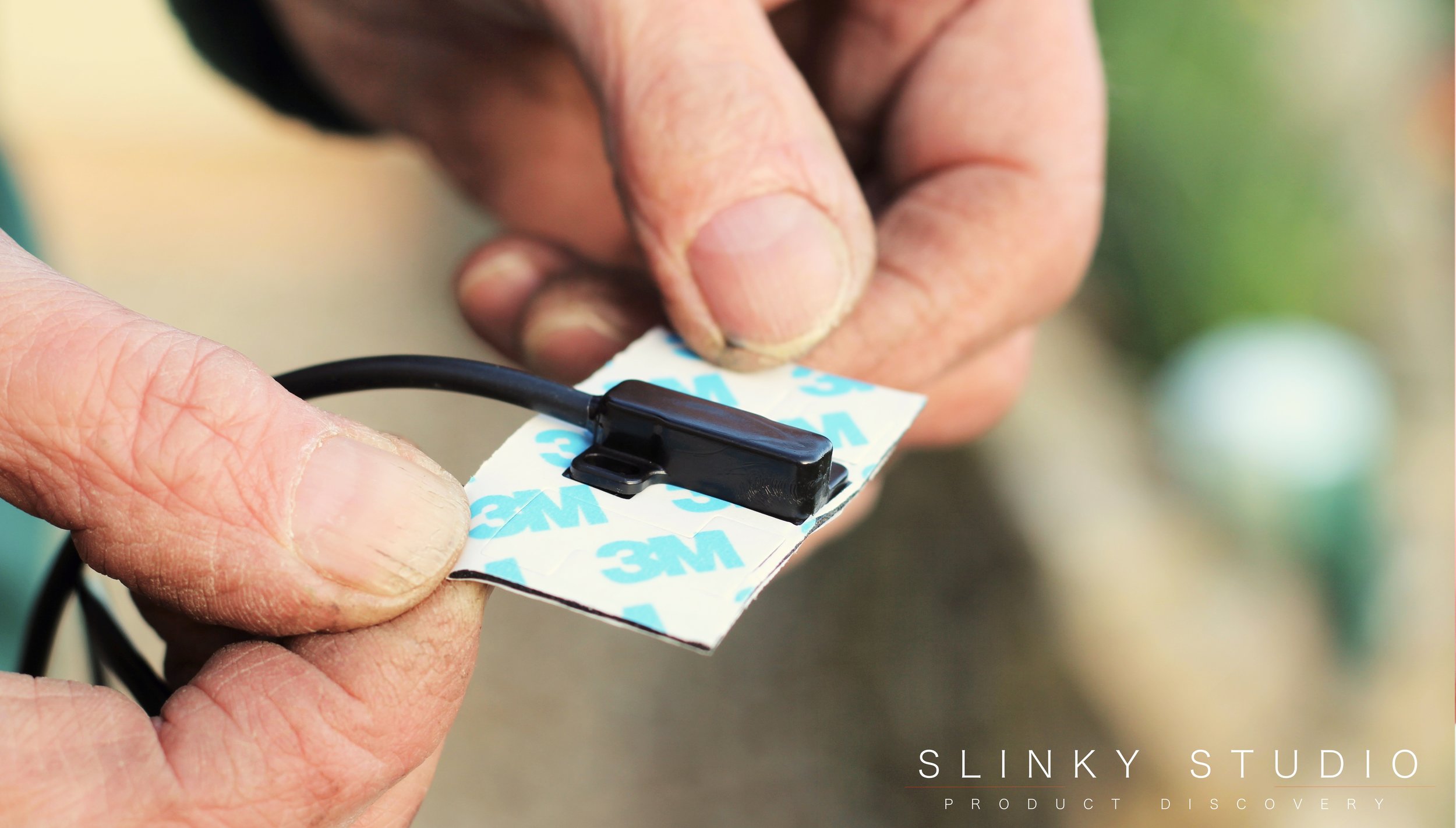
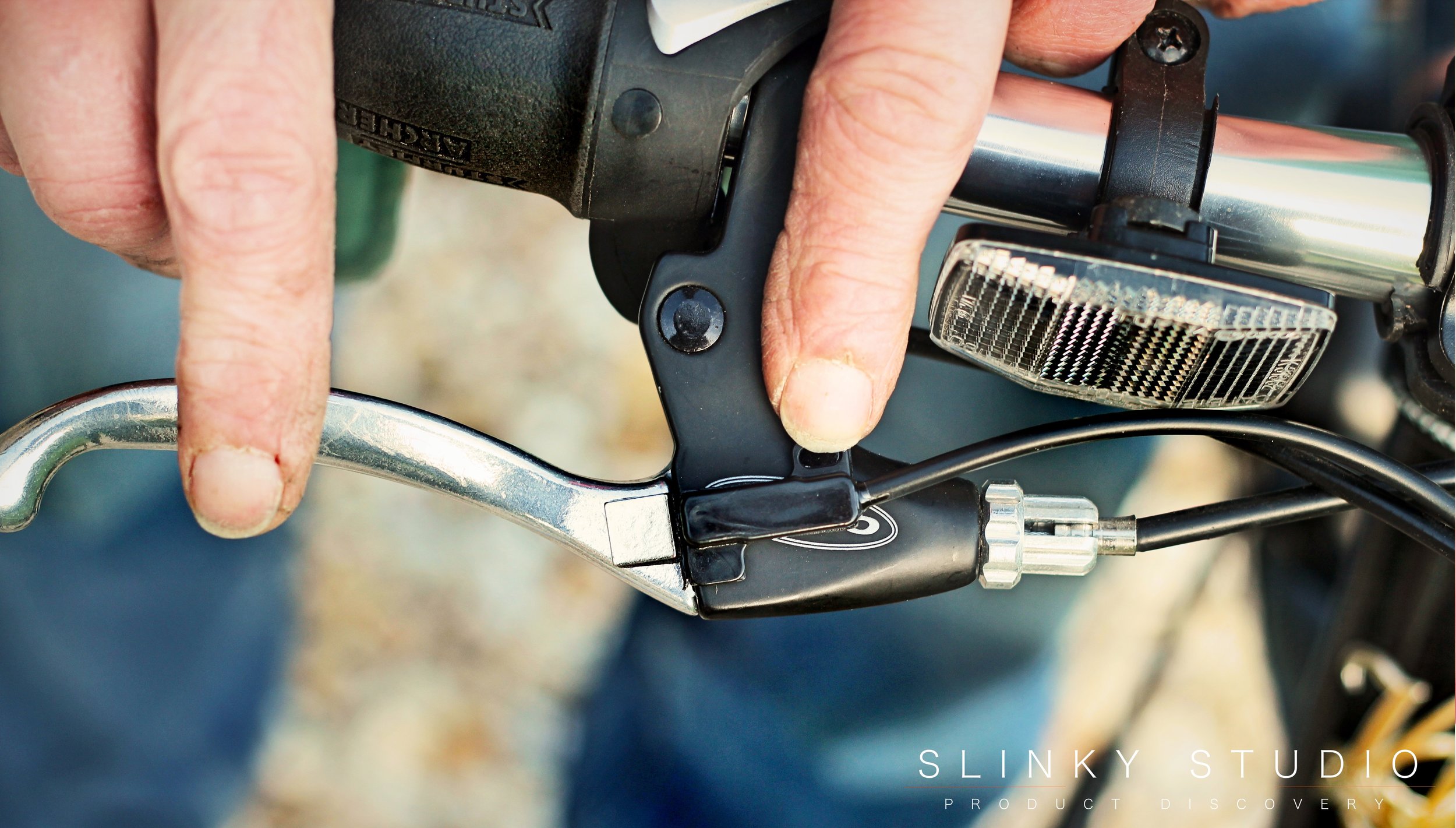
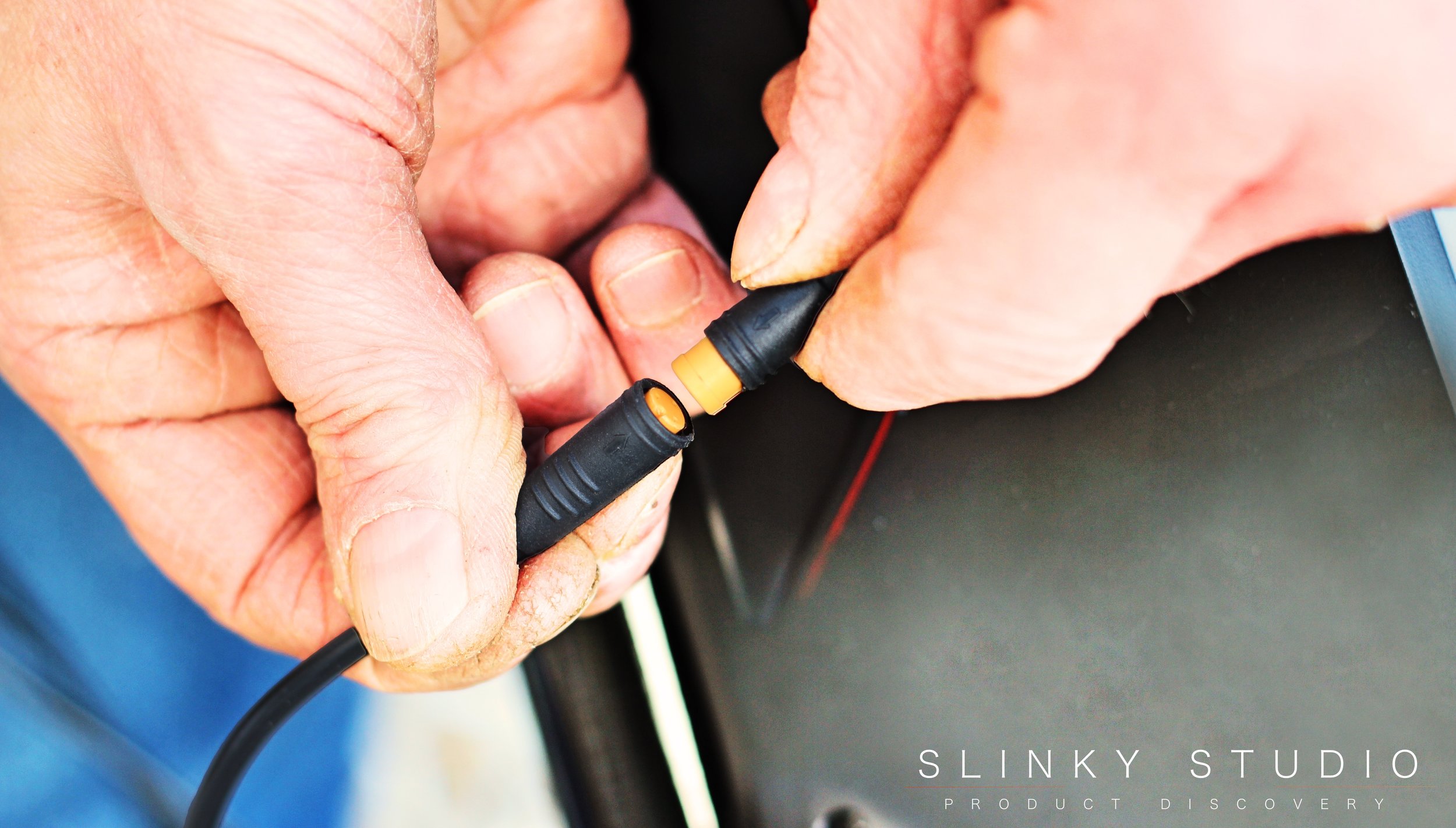
The Ride
Even though we knew we were adding electric power to our Pendleton Drake bike, it was still a surprise, when we first hopped aboard, to feel the pedal assisted power from the near silent motor spring into life to propel it along. Its 350W (limited to 250W in the EU & AUS) motor makes what was an already brilliant bike zestier and greater fun to ride. Practically, it takes away the leg stress of climbing mild to very steep hills through its 9-level pedal assistance system. The PAS springs into life without even a full rotation of a pedal, engaging and supporting cycling without interruption. Even general cycling on flat surfaces benefits when utilising the lower levels between 1-3 of assistance. Beyond this you can gain tremendous acceleration that you just can’t reach with manual peddling on this 3-gear bike. Not to forget the torquey little motor, which has decent throttle response from standstill - and will, with a little run up, tackle a hill all on its own.
What was odd is that we’ve only ever ridden rear wheel driven eBikes and shifting the power to the front wheel has a few distinctions to note. With the drive on the front wheel, power traction is a tad more diluted, but as this is primarily ridden on-road it’s hardly noticeable. There’s zero vibrational presence of the motor through the handlebar; braking and cut-out times on the motor are instantaneous and the whole system fairs equally as well as the rear powered wheelers at the studio. In fact, because we pedal the rear wheel and the motor is powering the front - it’s an all-wheel-drive affair! Above everything, the worry we had about the character of the bike changing has been unfounded: it still feels like the same sprightly bike with the Dillenger system in place - only with more zest.
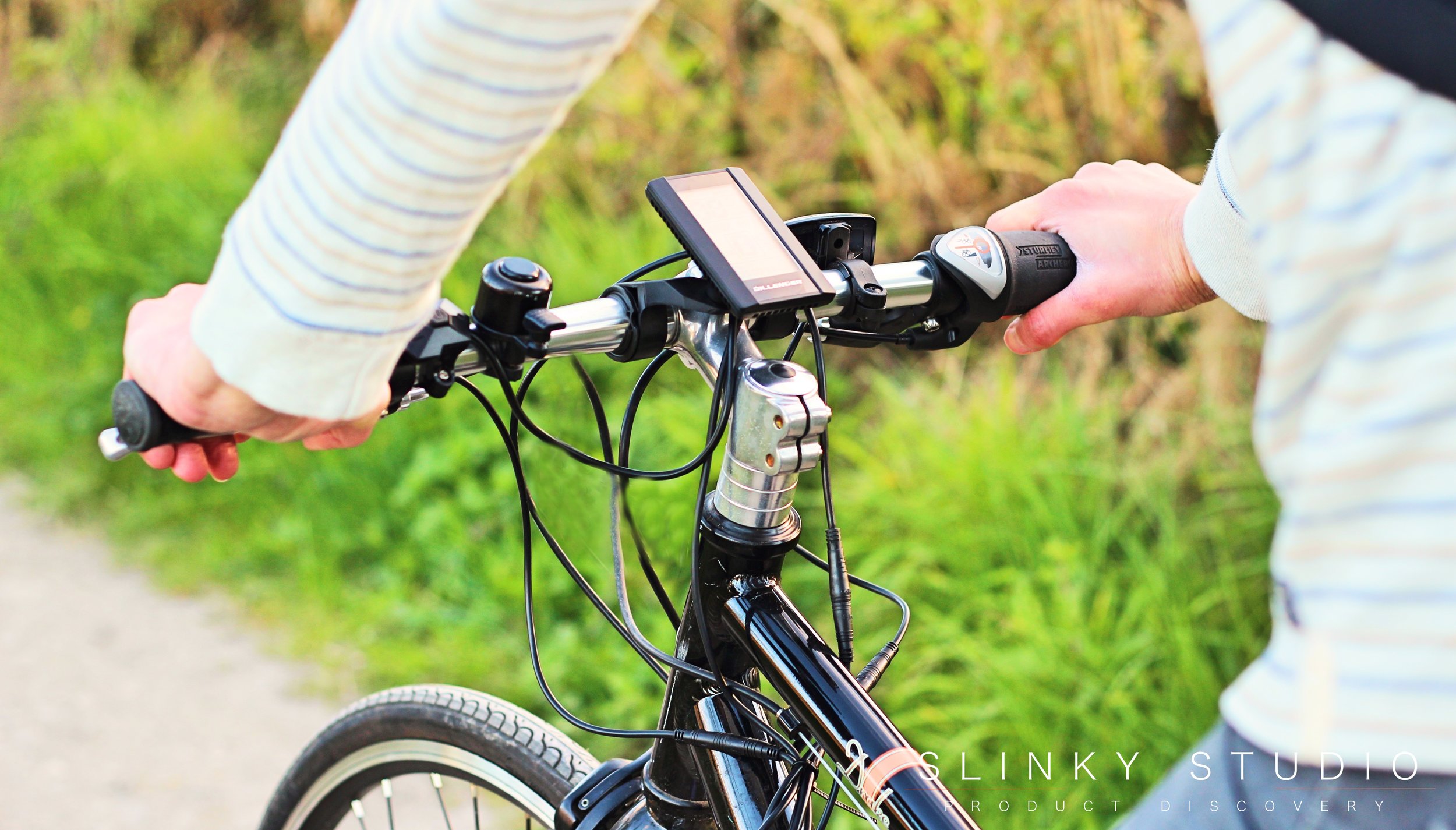
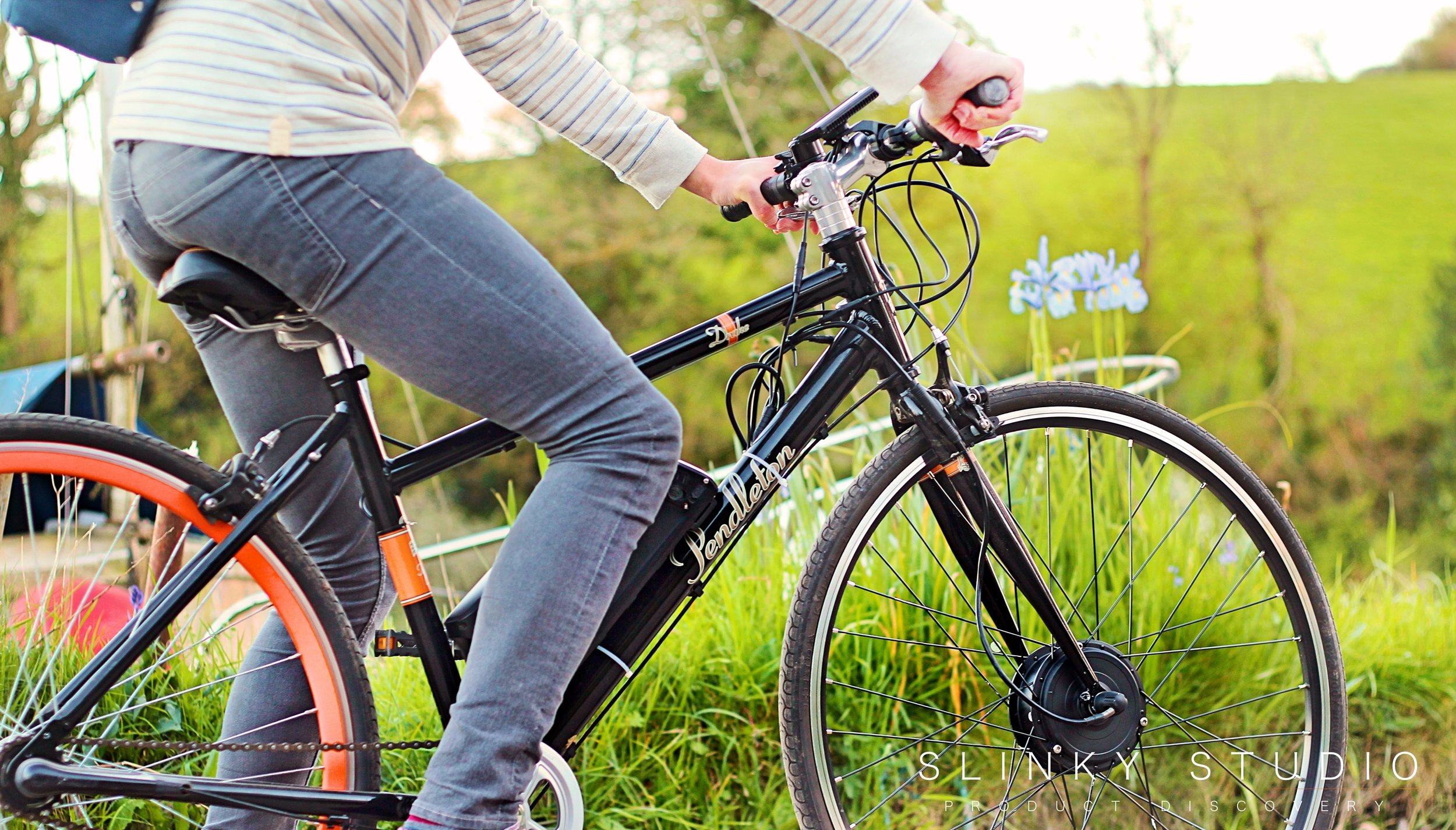
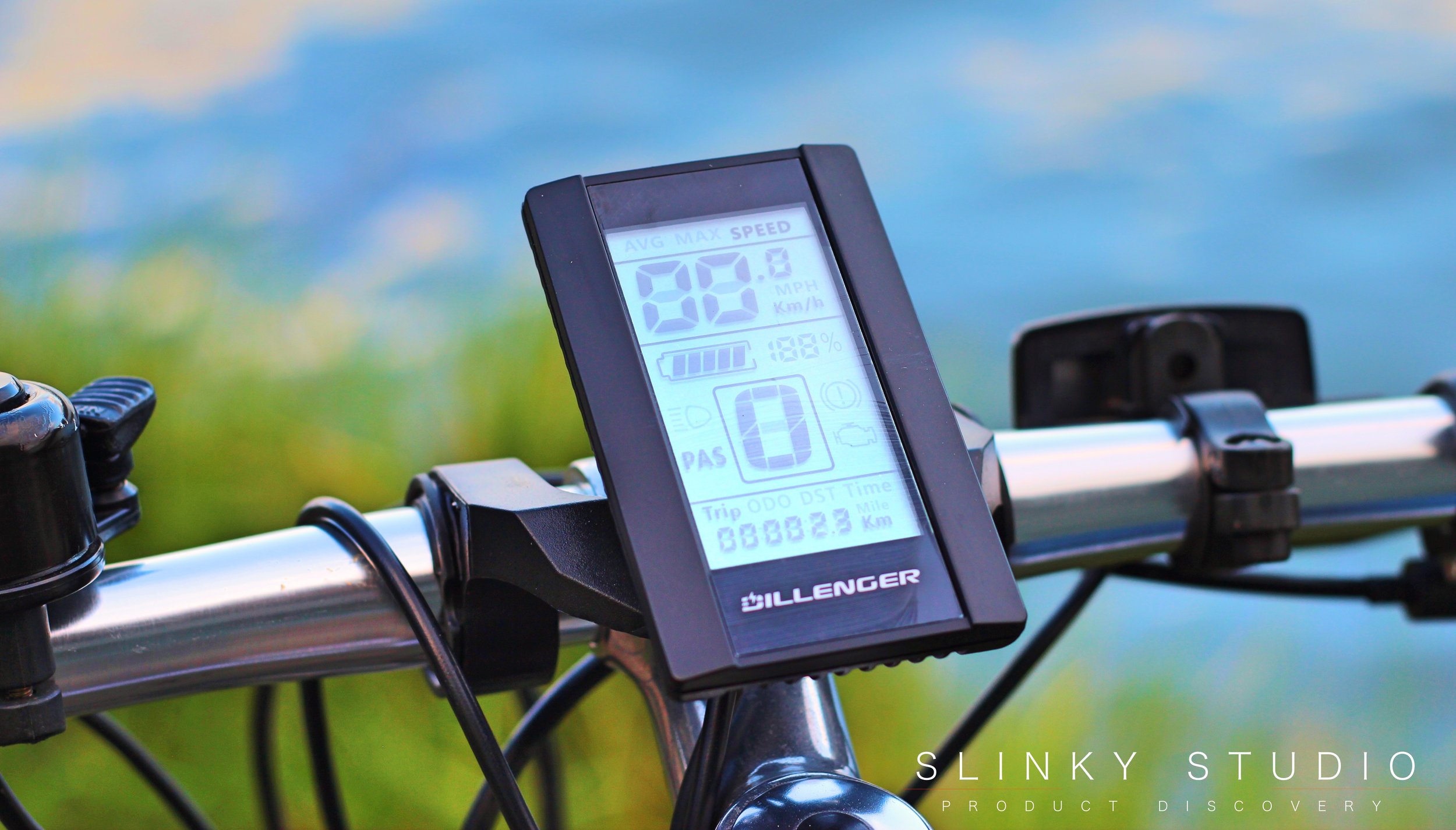
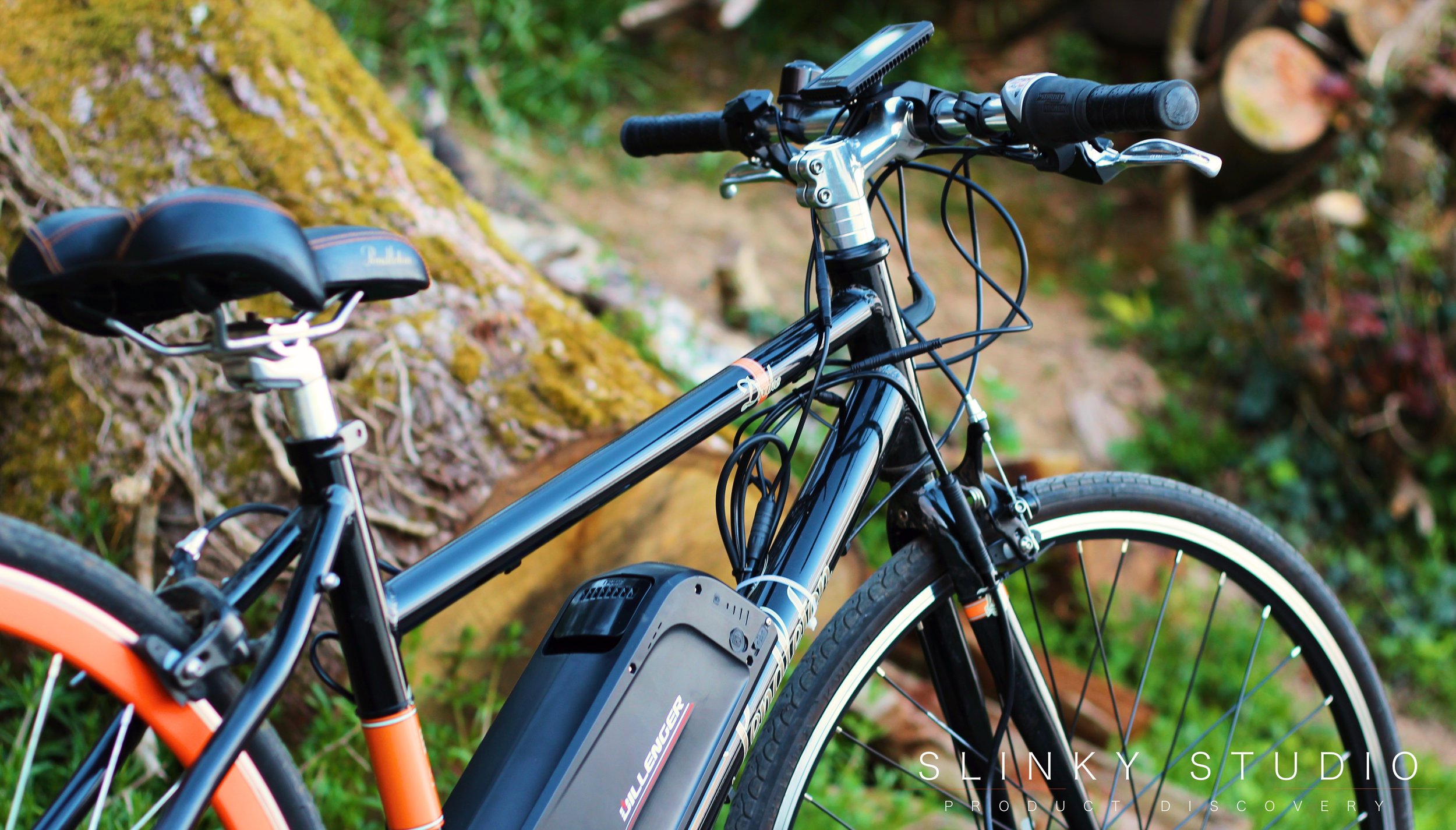
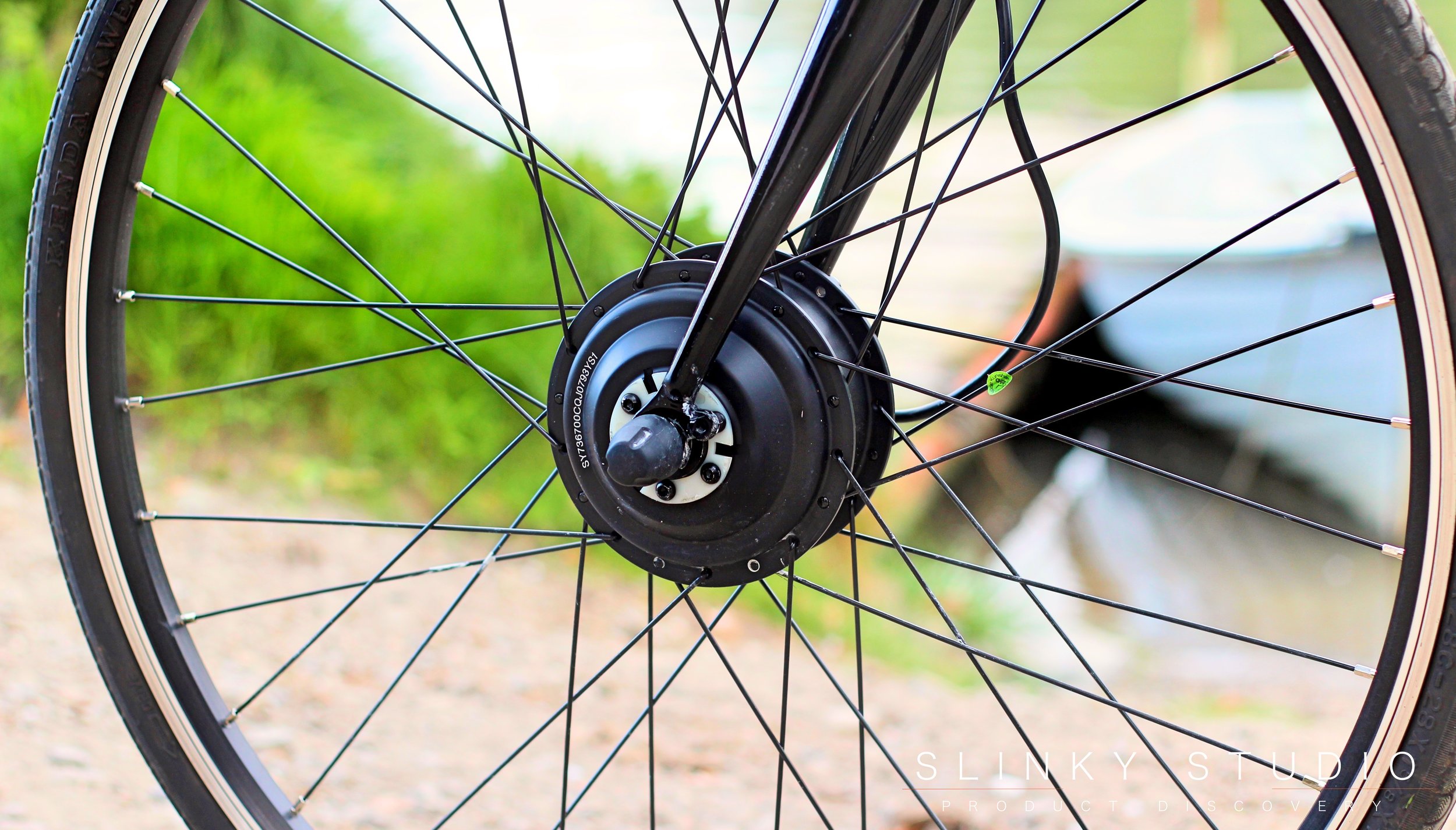
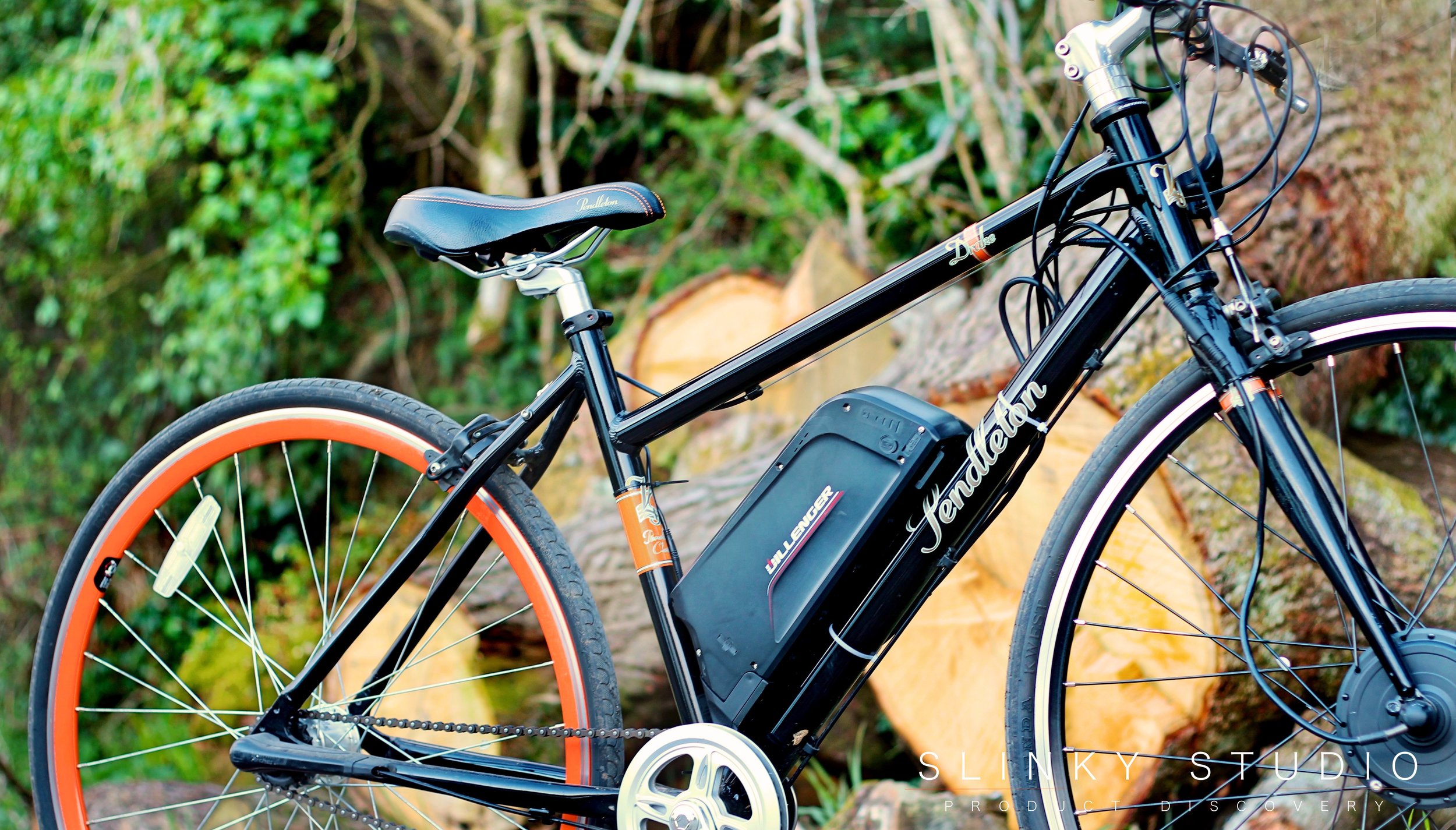

Battery Range
We just want to briefly touch on the Samsung battery Lithium Ion cells used within the Dillenger battery, as our own experience has shown they're highly reliable when it comes to eBikes. We left a similar fully charged Samsung Lithium Ion battery on our Cyclotricity eBike over the winter for five months untouched, and when we came to it recently it had retained a full charge and performed perfectly! With regard to range, this lightweight bike with a team of lightweight (66-80kg) riders making use of it, can perform for 80km (50miles) with minimal use on the throttle and assist levels set in the upper ranges between 5-7. These very advantageous numbers mean that in our scenario it doesn't need charging every day.
Verdict
We’d definitely do it again! Dillenger understand what the cyclist wants when it comes to a street legal conversion kit. An easy to understand installation, little bulk in the kit's design and, importantly, electrified assistance that takes us up steep hills without aching legs and boosts us along the flat to our next destination easily and smoothly; and all without interfering with the original character of the bike.

